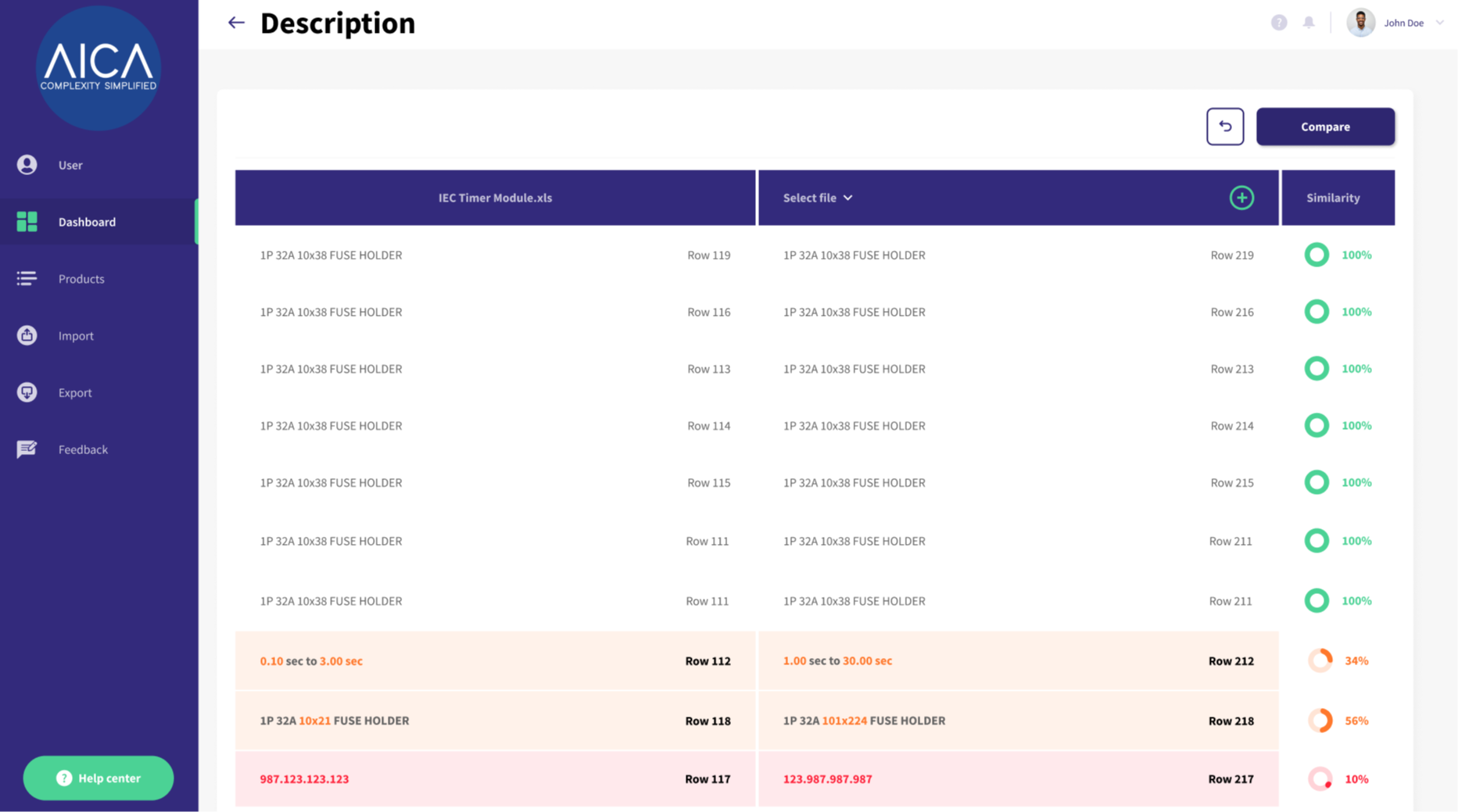Product Data Comparison
Product data comparison is the process of comparing your product data against competitors or market standards. It involves evaluating and contrasting multiple aspects of a product, from its features and functionalities to its price and perceived value in the market.
Businesses conduct such comparisons for various reasons including product development, marketing strategy adjustments, pricing strategies, and more.
With our advanced data comparison tools, we offer:
Innovation
AICA is committed to constant innovation, using cutting-edge technology to enhance our data solutions.
Precision
We deliver unmatched data accuracy by combining industry expertise with advanced algorithms.
Velocity
AICA accelerates processes with AI, saving time and resources while creating new business opportunities.
What is Data Comparison?

- Visual Comparison: We present a clear and concise visual representation of your product data compared with that of your competitors.
- Highlighting Gaps: Understand where your product might be lacking compared to competitors. Is there a feature they offer that you don't? Or perhaps a service component that sets them apart?
- Spotting Opportunities: We highlight where there's potential. Perhaps there's a segment of the market that's under-served, or a unique feature only you offer that can be marketed more prominently.
- User-Controlled Parameters: Businesses aren't locked into a static comparison. You can adjust what they're comparing, how it's compared, and against whom, giving you control over the insights you receive.
The Benefits of Product Data Comparison
Identify Market Opportunities
Comparing products might reveal gaps in the market that a business can capitalise on, whether it’s an unmet need or an underserved segment of the market.
Improved Product Development
By recognising the strengths and weaknesses of competing products, businesses can tailor their product development efforts to ensure their product offers superior features, functionality, or other attributes.
Effective Marketing and Positioning
With a clear understanding of how your product compares to others, you can craft more compelling marketing messages, highlighting unique selling points or advantages over competitors.
Risk Management
Knowing where your product stands in the market can help anticipate potential challenges, be it from disruptive innovations or shifts in consumer preferences.
Supply Chain Optimisation
Understanding how competitors price and position their products can also give insights into their manufacturing, sourcing, and distribution strategies.
Resource Allocation
When you know where the gaps or opportunities lie, you can allocate resources (like R&D, marketing, and sales efforts) more effectively.
Negotiation Leverage From Vendors
Armed with data about market pricing and features, you can negotiate better terms with vendors or suppliers.
